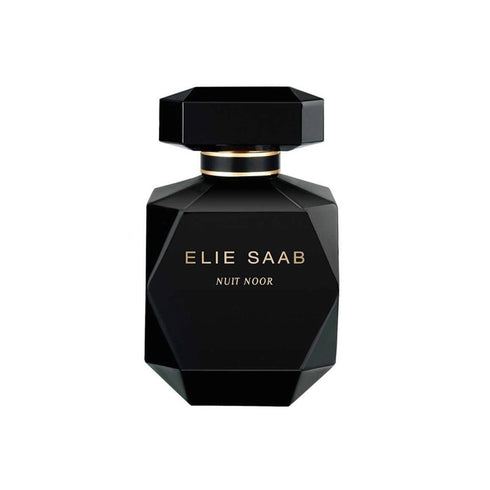- Home
- Elie Saab Nuit Noor

Amber accord of rose and woods, creating two complementary notes to translate light and the night. To enhance its radiance, the perfumer blends it with a particularly refined essence of Ylang-ylang from Madagascar, whose narcotic scent suffuses the fragrance with a solar aura.
A dusky sillage of spices, woods and resins that carries Nuit Noor from dusk to dawn… An icon of modernity in the Middle-East, this lively, vibrant, thriving city is the muse of Nuit Noor.
- Elie Saab Nuit Noor eau de parfum
- Notes: Woody Notes, Patchouli, Honey, Rose, Incense, Ylang Ylang, Spices, Solar Notes, Black Pepper
- Original packaging is not included and is for reference only.
- 150 gram (weight)
- RRP £105.00 per 100ml
The lists of ingredients that make up the composition of parfums products are regularly updated. Commonly used ingredients are:
Alcohol ● Parfum (Fragrance) ● Aqua (Water) ● Alpha-isomethyl Ionone ● Benzyl Salicylate ● Limonene ● Linalool ● Ethylhexyl Methoxycinnamate ● Diethylamino Hydroxybenzoyl Hexyl Benzoate ● Citronellol ● Geraniol ● BHT ● Oil Extracts ● Citral ● Benzyl Alcohol ● Benzyl Benzoate ● Eugenol ● Coloring Agents ● Tocopherol ● DPG
The manufacturer is responsible for the ingredients of the product. We recommend checking the list of product ingredients directly on the manufacturer's website due to potential changes. Periodic updates to EU regulations could demand the for manufacturers to re-formulate existing fragrances to meet new regulations.
Be aware that large neck roller bottles may contain polymers to reduce leakage in according to regulatory packaging requirements. Roller bottles should not be transferred into spray bottles.
Allergies or Sensitivities:
If you suffer allergies or sensitivies, and before using a perfume product or the long-term use of fragrances, please check the latest updated list of ingredients from the original manufacturer to be certain that the ingredients are suitable for your personal use as they may differ, be updated or changed with new released batches.
Perfumes can also be used on clothes instead of skin to reduce direct skin contact. However, due to alcohol content or thickening agents, perfumes can have a small negative effect on fabrics:
The (EU) Cosmetics Regulation 1223/2009 lists the 26 most-known allergenic substances, which you can find in the link below:

